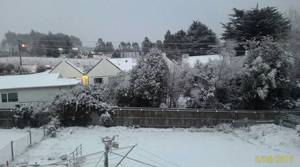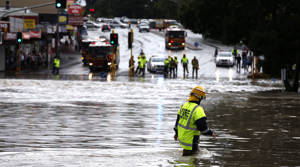The unusual warmth that dominated our climate last summer has had alarmingly apparent impacts on the South Island’s postcard glaciers and mountain snowlines.
Although it’s unclear what further impact the balmier temperatures of the past few months have had, a lack of snow build-up over the cold season and another hot summer could make the picture even more dire for the tourist draws.
Each year, scientists separately survey snowlines and glacier retreat in the Southern Alps to gauge the impacts of seasonal climate trends.
Dr Brian Anderson of Victoria University’s Antarctic Research Centre, said the latest measurements for Fox Glacier and Franz Josef Glaciers showed they had now shrunk to record levels.
“Winter in 2015 had pretty average snow accumulation on the glaciers, but summer in 2016 was really warm, and by the end of the summer the glaciers had lost a lot of snow and ice.”
The amount of melt recorded put it on a par with the last time there was a dramatic loss of ice, during the 2010/11 summer, which was coloured by one of the strongest La Nina climate systems ever recorded.
Since that time, Fox Glacier had retreated 750m, while Franz Josef had crawled back 1.5km.
“At one point last year, it was actually looking like Franz Josef might have had a wee advance before the summer, but then the summer was so hot that that wave of ice just disappeared and there was no advance at all.”
It was difficult to tell what impact the warmer conditions that have characterised the past few months would have on the glaciers’ movement.
This was because the icy behemoths were more sensitive to bigger temperature shifts over summer, rather than winter.
“It will take a few years to respond to this and it’s quite hard to predict these short-term changes,” Anderson said.
“All I can really say is it’s likely to keep retreating because of the warm summer, but I can’t really say how much until we can check it again.”
The glaciers are measured twice a year: once at the end of winter, and again at the end of summer.
“It’s always the case that we don’t have a clear picture until the end of summer, as that’s when it’s done its thing for the year.”
The continuing decline of the glaciers follows a study published last year, finding that in just four decades, the alps’ ice volume had shrunk by 18.4cu km or 34 per cent, with the trend accelerating in the past 15 years.
The World Glacier Monitoring Service estimated extent of ice volume in the Southern Alps in the 1890s was 170cu km, compared with over 36.1cu km now, a change the study authors said was evidence of the local effects of global warming.
Based on regional warming projections of 1.5C to 2.5C, it has been projected by glaciologists Valentina Radic and Regine Hock that just 7 to 12cu km of ice would remain on the alps by the end of this century.
Meanwhile, the hot summer had pushed the Southern Alps’ snowline up to “exceptionally high” levels, said Dr Andrew Lorrey, a climate scientist at the National Institute of Water and Atmosphere (NIWA).
An aerial observation in March had shown a relatively high degree of loss of the previous winter’s snowfall.
Ahead of last summer, it was expected the then-predicted strong El Nino would have a big impact.
Instead, it proved to be unseasonably warm sea surface temperatures in the Tasman Sea, bringing warmer prevailing air flows over land, that delivered the blow. Considering the above average-temperatures so far this season, another hot summer would take even more snow out of the bank.
“If we don’t get the amount of snowfall that we usually get in winter to help things, and we follow that with more warm temperatures in summer, that’s not good,” Lorrey said.
“I can’t predict what next year’s survey is going to say, but we are going to be looking at that with keen interest, to see if snowlines have gone even higher.”
It was accepted that in the longer term, a warming planet would raise snowlines higher.
“If you have a general warming of ambient temperatures — and then you have a potential loaded-dice situation where we’ll get more frequent La Ninas because of multi-decadal variation — it means that in the decade we’re in, and maybe the next one, we’ll see more loss relative to previous years.”
By Jamie Morton of the NZ Herald













